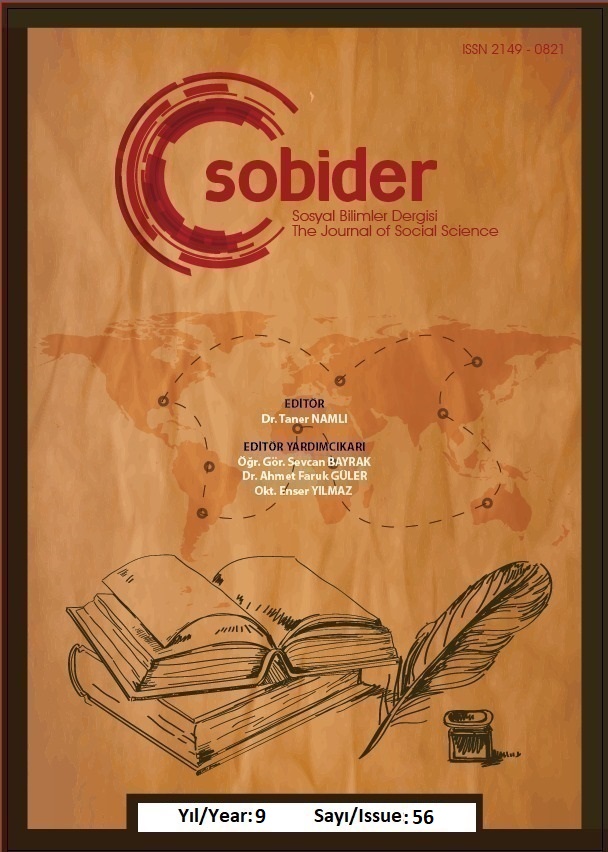Author :
Abstract
Asya kültürleri arasında, genellikle Çin ve Japon kültürlerinin yanında gölgede kalan Kore kültürü oldukça renkli bir kültür anlayışına sahiptir. Günümüz popüler kültüründe de ilgi odağı olmaya başlayan Kore kültürü, köklü bir tarihsel sürece sahiptir. Özellikle Kore Yarımadası, Joseon Dönemi’nde altın çağlarından birini yaşamıştır. Kore’nin geleneksel giysisi olan Hanbok zaman içinde değişime uğrasa da, günümüzde bilinen hali Joseon Dönemi’ne ait formudur. Geçmiş dönemlerde pek çok medeniyette olduğu gibi Kore kültüründe de giyim kuşam önemli bir statü sembolüdür. Özellikle kraliyet giyim kuşamı estetik kaygıların yanı sıra statüye bağlı sembolik kodlardan oluşmaktadır. Böylece saray içinde giysiyi giyen kişinin hangi mevkide olduğu kolayca tespit edilebilmektedir. Günlük giyimden, törensel giyime kadar pek çok hadise de çeşitli türlerde kostümler tercih edilmektedir. Bu da giyim kuşamın, estetik değerlerin ve ihtiyaçların ötesinde bir kavram olarak kullanıldığını belirtir.
Keywords
Abstract
Korean culture, which is usually overshadowed by Chinese and Japanese cultures among Asian cultures, has a decently colorful understanding of culture. Korean culture, which has also become the center of attention in today's popular culture, has a very full history . Especially during the Joseon Period, it experienced one of its golden ages. The Hanbok form, known as the traditional clothing of Korea, is the Hanbok form used during the Joseon period. As in many civilizations in past eras, clothing is an important status symbol in Korean culture. In particular, the royal dress code consists of symbolic codes related to the status, as well as aesthetic concerns. Thus, it is easy to determine which position the person wearing the garment is in within the palace. Costumes of various types are preferred for many events, from daily wear to ceremonial wear. This, in turn, indicates that clothing is used as a concept that goes beyond aesthetic values and needs.
Keywords
- Brown, John ve Brown, Ju (2006). China, Japan, Korean: Culture and Customs, South Carolina, BookSurge LLC
- Cho, Hyemin (2016). A Study on Fashion Design Applying the Traditional Korean Culture Heritage, Savannah GA, Savannah College of Art and Design
- Kang, Sunje ve Kim, Mija ve Kim, Jeongho ve Baek, Yeongja ve Lee, Eunju ve Jo, Uhyeon ve Jo, Hyosuk ve Hong, Nayeong (2015). Dictionary of Korean Costume, Seoul, Minsokwon
- Korean Culture And Information Service (2013) Facts About Korea, Seoul, Ministry of Culture Sports and Tourism
- Kwon, Oh-chang (2011). Korean Costumes During the Chosun Dynasty, Seoul, Hyunam Publishing Co.
- Lee, Songhoon Samuel (2013). Hanbok: Timeless Fashion Tradition. Seoul. The Korea Foundation
- Lynch, Annette ve Strauss, D. Mitchell (2015). Ethnic Dress in The United States, A Cultural Encyclopedia, London, Rowman & Littlefield
- Ryu, Huigyeong ve Kim, Mija ve Jo, Hyosun ve Park, Minyeo ve Shin, Hyesun ve Kim, Yeongjae ve Choi, Eunsu (2001). Two Thousand Years of Korean Fashion, Korea, Misulmunhwa





